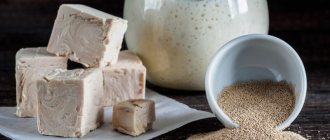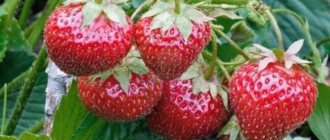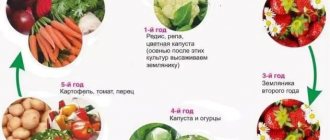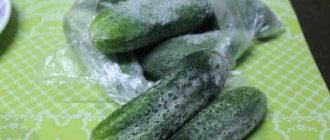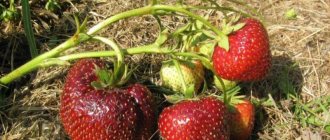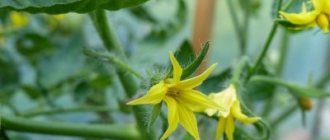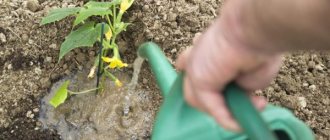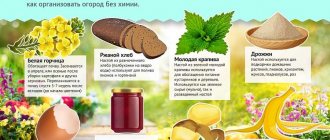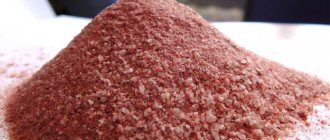Yeast composition and benefits for plants
Biologists classify yeast as a group of unicellular fungi. But in the process of evolution, their composition and habitat have changed greatly. For normal functioning, yeast requires a semi-liquid or liquid substrate. Among the yeasts we can name the following types: baker's, brewer's, pressed, wine, instant and dry. But to prepare a solution for feeding plants, it is better to use baker's yeast.
Using yeast in the garden
The benefits of yeast have been known since ancient times. They are used in cooking and for preparing alcoholic beverages. And just recently it turned out that yeast is an excellent fertilizer for garden and indoor plants.
Yeast contains 1/4 dry matter and 3/4 water. In addition, yeast is rich in proteins, carbohydrates, fats and nitrogen. They also contain potassium and phosphoric acid. Proteins contain amino acids, and fats contain fatty acids (polyunsaturated and saturated).
Strawberries fed with yeast solution receive all the necessary substances: B vitamins, cytokinin, thiamine, auxin. By receiving all the micro- and macroelements (copper, iodine, calcium, phosphorus, potassium, zinc and iron), the plants develop well and bear fruit.
How to feed strawberries during the flowering stage?
During the flowering phase, it is better to fertilize garden strawberries with folk remedies. To prepare the fertilizer, you can choose any of the following recipes. It is recommended to alternate the compositions with each other.
Wood ash
Often gardeners prefer to feed strawberries with ash. This organic matter contains a large amount of potassium, so it is ideal as a plant food during the bud formation stage.
It is best to prepare an infusion from the ash:
- 250 g of ash powder is poured into 1 liter of just boiled water and left to infuse for 24 hours.
- The volume of the infusion is brought to 10 liters, diluting it with warm water.
- Apply 0.5 liters of fertilizer to each bush.
Chicken droppings
This fertilizer is rich in nitrogen, phosphorus, potassium and other elements necessary for plant development. Substances introduced into the soil are not consumed immediately, but are absorbed by plants gradually, so this fertilizing has a long-lasting effect. Under no circumstances should you feed fresh chicken manure. It is pre-dried in the open air and only then used to prepare a nutritious infusion.
Feeding is prepared in advance. The litter is mixed with clean water in equal proportions and allowed to brew for 2 weeks. Before use, 1 liter of concentrated mixture is diluted in 10 liters of water. If you use dry granules from the store, the fertilizer can be prepared faster. A handful of granules is added to 10 liters of water, kept for 1-2 hours and used for watering at the root. 0.3-0.5 liters of infusion is enough per bush.
Yeast solution
To prepare the fertilizer, a product such as yeast is used. They can be taken fresh or dry. As a result of using this folk remedy, strawberries will receive B vitamins, thiamine, auxin and a large amount of macro- and microelements (potassium, calcium, phosphorus, copper, iodine, zinc, iron). This fertilizer strengthens the plant’s immunity and stimulates the appearance of additional roots.
The solution can be used for root and foliar feeding:
- prepare fertilizer from 50 g of live yeast, dissolving it in 1 liter of warm water;
- the composition must ferment for several hours;
- Before use, 1 liter of concentrate is diluted in 5 liters of water.
The result is 5 liters of nutrient solution. You can replace live yeast with dry yeast, taking it in the amount of 1 teaspoon. To enhance fermentation, 1-2 tablespoons of sugar are sometimes added to the solution. Each bush requires 500 ml of natural fertilizer. After this, the strawberries can be fed with yeast twice more - during active fruiting and after harvesting. It is not recommended to use yeast fertilizers on acidic soil.
Boric acid
Boric acid is better absorbed by the plant if foliar feeding is carried out. This technique not only improves the quality of flowering, but also improves the taste of the berries, making them more sugary. Bushes treated with boric acid are less susceptible to dry rot and bacteriosis
This fertilizing can be used periodically throughout the growing season, but during the flowering stage it is especially important. Boron is essential for those plants that grow in soil with a large amount of carbonates.
With a lack of microelement, the root system of strawberries becomes prone to rotting, the vascular system of plants functions worse, which makes it difficult to absorb nutrients. Over time, the bushes begin to lag in growth. If boron is critically deficient, the growing point may die, and the yield is noticeably reduced.
It is better to prepare a solution from several components:
- boric acid – 1 g;
- potassium sulfate – 2 g;
- potassium permanganate – 1 g.
The listed substances are dissolved in 5 liters of hot water. The leaves are sprayed with the prepared composition, or they are generously moistened on both sides. Bushes are treated at the very beginning of flowering and in the middle of this period. When the ovaries begin to form, you can feed the strawberries with boric acid again.
The benefits of yeast feeding
- It is a good growth stimulator and a source of beneficial bacteria.
- When feeding with yeast solution, plants' immunity is strengthened and they are less likely to get sick.
- As a result of research, it has been proven that yeast is a good stimulator of root formation. And, as you know, if a plant has a well-developed root system, then the foliage will be lush and it will bear more fruit.
- When rooting strawberry rosettes, the yeast solution accelerates their survival.
- Yeast used for foliar feeding is absorbed more quickly by plants, which brings significant benefits for the development of strawberry rosettes.
When applying yeast fertilizers to the soil near strawberries, microorganisms intensify their activity and actively begin to process organic matter, release nitrogen and phosphorus, thereby having a stimulating effect on the root system of plants.
Yeast as fertilizer
After adding the yeast solution to the soil, the efficiency of the soil increases. Yeast bacteria in the soil develop quickly. The source of natural bacteria is yeast, which increases plant immunity:
- the growth of strawberry roots is stimulated;
- the above-ground part of the strawberry grows more actively until the moment of fruiting;
- The resistance of strawberry bushes to diseases increases.
Reference! Since strawberries have the ability to remove nutrients from the soil, after watering with a yeast solution, it is necessary to pollinate the soil with ash.
How to prepare a solution for feeding strawberries
You will need dry or live yeast, water, sugar.
- To prepare one liter of solution you will need to take 50 grams. live yeast and dissolve in warm water. Before use, the resulting mixture must be diluted with water in a ratio of 1:5. That is, the result will be 5 liters of fertilizer.
Preparation of yeast solution - In one liter of summer water you will need to dissolve 1 tsp. dry yeast, add the same amount of sugar and leave to infuse for 2 hours. The finished mixture must be diluted with water in a volume ratio of 1:5.
- Baker's yeast in the amount of 200 g. must be diluted in one liter of summer water. After infusion, water is added to the prepared mixture and the volume is adjusted to 10 liters.
- During the day you need to infuse 100 grams. live yeast diluted in a bucket of water.
- In a glass barrel with a volume of 70 liters, pour a bucket of chopped grass, add 0.5 kg of yeast and 500 g. dry bread. Use after infusion for 2 days.
- In a bucket of water you need to add dry yeast in the amount of 10 grams, add 2 tbsp. l. Sahara. Stir well. After infusion, dilute the prepared solution with water in a ratio of 1:5.
Using dry yeast - Add a handful of earth, 1 tablet of ascorbic acid, 2 tbsp. to a 5-liter bucket of water. l. granulated sugar and 1 tbsp. l. dry yeast. The solution must be kept in a dark place for 5 days. Before feeding, dilute with water 1:10.
Operation technology
You can feed bushes after winter and during preparation for autumn using both root and foliar methods at the personal discretion of the gardener. However, treating the bush with a yeast solution during flowering of the bush is carried out only by root watering.
Contraindications for using yeast:
- do not water the bushes with the solution from 10 a.m. to 3 p.m.;
- do not use yeast in large quantities for fertilizing, because this will only reduce the yield of strawberries;
- do not replace organic fertilizers with yeast;
- do not use the solution for a long time, as it is not stored for a long time;
- Do not use fertilizer for frozen soil.
What to do if you don’t have baker’s yeast on hand?
If you couldn’t buy regular baker’s yeast, don’t worry. At home, you can prepare natural yeast, which in its composition and availability of nutrients is in no way inferior to purchased yeast.
Preparing sourdough from hop cones
The pharmacy sells hop cones. You will need to take one glass of cones, place it in a saucepan, add one and a half liters of boiling water and cook over low heat for an hour. After the time has passed, let it cool, then strain through 2 layers of gauze. To the finished cooled solution, add 2 tbsp of wheat flour. l. and the same amount of sugar. The solution should ferment for 2 days in a dark but warm room. When the mixture begins to ferment, grate 2 potatoes (boiled) on a fine grater, add to a bucket and leave to ferment for another day. You need to feed with a diluted solution: 1 glass per 10 liters of water.
Preparation of fertilizing based on wheat grain starter
Sprout the wheat, grind the grains to make one glass of the mixture. Add flour here - 2 tbsp. l. and the same number of spoons of sugar. The consistency should be like thick sour cream. Place the mixture on the fire and cook for about 15 minutes. Leave the mixture for a while. Within 1 day it will be possible to observe the fermentation process. You need to see if the mixture has already fermented, you can feed the plants by diluting the entire mixture in a bucket of water.
Fertilizers used during fruiting period
In the summer, after fruit set, strawberries still need an active supply of nutrients. The same organic fertilizers and folk remedies will help provide it with everything it needs. In addition to wood ash, chicken manure, yeast, boric acid, there are other fertilizers suitable for the fruiting stage.
Mullein solution
Fresh manure is not used to fertilize strawberries due to the high content of pathogens and weed seeds. In addition, when organic matter burns in the soil, the temperature rises significantly, which can have a negative effect on the roots, so it is necessary to use only rotted manure.
Prepare mullein solution as follows:
- A 10-liter bucket is filled 1/4 with manure, the remaining volume is filled with water;
- the fertilizer should be infused for several days until the specific odor disappears;
- the resulting solution is used in diluted form - add 4 parts of water to 1 part of the concentrate;
- for 1 sq. m of beds, add 10 liters of the resulting solution.
Strawberries are watered with the resulting fertilizer at the earliest stage of fruiting, as soon as the ovaries form. The solution must be applied strictly at the root; if it gets on the leaves, organic matter can cause a burn. In the absence of mullein, you can feed strawberries with urea (1 tbsp per 10 liters of water). The prepared solution can be used for root and foliar feeding. Urea and mullein cannot be added simultaneously with ash; these substances neutralize each other’s effects.
Ammonia
Ammonia is nothing more than an aqueous solution of ammonia, so it can be used as a nitrogenous fertilizer. The product is sold in pharmacies and is distinguished by its availability and low price. If the leaves of strawberries that have been depleted of fruiting have turned yellow, foliar feeding based on ammonia will help.
In addition, the pungent smell of ammonia repels insects. If you treat the plantation with this product, ants, slugs, aphids, and nematodes will not settle on it. Spraying with ammonia is also used as a prevention of fungal diseases (brown spot and gray rot).
To prepare the working solution you will need 10% ammonia and water. For 10 liters of water, 3 tbsp is consumed. l. ammonia. Before processing the strawberries, the prepared mixture is poured into a watering can and the bushes, as well as the ground under them, are irrigated. First, the strawberries need to be watered.
Iodine tincture
Iodine solution is used to feed berry bushes in the spring, at the very beginning of fruiting and after harvesting. When added to the soil, this element enters into complex chemical reactions, resulting in the release of oxygen, which has a beneficial effect on the condition of strawberry roots. In terms of the effect of its use, iodine can be compared to hydrogen peroxide.
Due to its disinfecting properties, iodine solution can be used to prevent fungal and bacterial diseases. Foliar fertilizing with iodine is carried out at the early stage of fruiting. To avoid burning the leaves, the solution should have a low concentration. It is prepared using 3 drops of iodine per 10 liters of water. For soil treatment in the spring and after the berries are released, the concentration can be higher - 15 drops per 10 liters of water.
Herbal fertilizer
Nettle infusion well stimulates the development of strawberries at all stages of the growing season. You can feed the bushes with green fertilizer at the very beginning of fruiting and after its completion. It is prepared according to this scheme:
- When collecting grass, you need to wear gloves to avoid burning your hands. Then the raw materials are crushed with a knife and filled with warm water in a 1:1 ratio.
- The infusion should ferment for 5-7 days. The higher the air temperature, the faster the fertilizer will be ready.
- During the fermentation process, the composition is periodically stirred.
- The resulting concentrate is diluted with water in a ratio of 1:10.
The fertilizer is used for watering at the root; the infusion should not get on the leaves. If the bushes look strong, you can skip feeding with nettles at the stage of ovary formation. In this case, the plants will need to be fed after fruiting.
Strawberries are among the crops that are responsive to fertilizer application. To get a high-quality harvest, you need to take into account the needs of the plant and carry out regular feeding. When using folk remedies, it is easier to avoid an overdose of chemical elements, which means that the berries can be eaten without fear for your health.
At what time should I feed the plants?
Yeast is very popular among summer residents. They feed not only strawberries with the prepared solution, but also vegetables, shrubs, and house plants. But many gardeners still question whether it is possible to use yeast to feed strawberries. This question can be answered: “Not only is it possible, but it is also necessary!”
In order to feed 10 strawberry bushes, you will need to prepare 5 liters of natural fertilizer. The nutrients supplied to the plant roots from the prepared solution are enough for 2 months.
When is the best time to feed strawberries with yeast solution? During the growing season, 3 feedings are required. That is, the first feeding is carried out during the period of bud formation and flowering, the second - during fruiting, and the third - after the end of the fruiting and harvesting period.
Prepare concentrate
Fertilizing strawberries with yeast:
| Method 1. How to prepare the solution ')); (w||(w=[]))&&w.push({id:b,block:'14502'});})(window,document,”mtzBlocks”); Help: yeast contains many different microelements, proteins, fats and carbohydrates that promote the development of active growth of strawberries, as well as microelements for obtaining a rich harvest. Stages:
All types of solutions are concentrated and are subject to further dilution with water | |
| Method 2. How to dilute the concentrate Help: you cannot water the plants with a concentrated solution; you can burn the plant. It should be diluted with clean, settled water. Stages:
A prerequisite for the plant to receive all prepared microorganisms must be warm weather and warm soil | |
| Method 3. How to water Information: in yeast fertilizers, microorganisms develop in warm water, so fertilizing should be done in the warm period during flowering. Stages:
The bushes can also be treated with yeast water by irrigating the green mass, this will protect garden strawberries from viral diseases | |
| Method 4. What is the benefit Help: yeast has the same effect on strawberries as stimulants and microfertilizers combined. Stages:
Environmentally friendly yeast feeding not only increases productivity, but is also harmless to health | |
| Method 5. Rules for applying fertilizers Help: to grow strawberries in open ground, you must follow the rules for applying fertilizers. Stages:
To preserve calcium and potassium in the soil, you can add wood ash to the yeast solution |
You should not overuse yeast supplements, as potassium and calcium, which are actively involved in fermentation, are washed out of the soil.
First feeding
In early spring, when the snow melts, the ground warms up and strawberry bushes begin to appear, it is necessary to loosen the soil, remove weeds and apply yeast-based fertilizers. The plant will quickly begin to grow, increase its green mass and prepare for flowering.
For your information! If slight frosts occur during the flowering of early strawberries, bushes fed with yeast are much more resistant to temperature drops.
Fertilizers containing yeast
Yeast supplements prepared independently undoubtedly have a good effect on strawberries, but it may make sense to change them to preparations from the EM series.
In addition, they contain lactic acid bacteria, enzyme fungi, synthetic bacteria and yeast. EM series preparations:
- "Baikal"
- "Renaissance"
- "Shine"
They have properties in common with yeast supplements. They can also be used in combination with herbal infusions. The use of EO preparations also begins in early spring, from April, taking into account the temperature regime.
Second feeding of strawberries
You will have to feed the yeast a second time during fruiting, when green berries appear. Fertilizing will speed up the ripening process and increase the weight of the berries themselves. During fruit ripening, plants need to be watered frequently. Strawberry bushes are saturated with moisture and the berries become large. If you give up and let everything take its course, cultivated strawberries may soon turn into wild ones. The berries will become small with a bitter taste, the foliage will also become smaller.
Fertilizing strawberries with yeast solution
How many times to feed
Fertilizer can be applied 2-3 times a season.
If you want to fertilize more often, you should reduce the concentration of the solution.
When you feed strawberries with yeast, do not forget to add ash.
The yeast nutrient mixture can also be used to treat other crops in the garden.
Our survey
How do you propagate strawberries? In what way do gardeners most often plant strawberries?
Rate the article!
Votes: 1 Average rating: 5
About the author: Nikolay Golubev Experienced gardener with 20 years of experience
- Related Posts
- Growing strawberries in the Urals: planting in open ground and care
- Treatment of grapes in spring from diseases and pests
- Apricot pruning in autumn: scheme for beginners, crown formation
« Previous entry
Third feeding of strawberry bushes
The third feeding is carried out after harvesting. Some owners mow down strawberry foliage. But this is not advisable, since the plant must overwinter with foliage. And cut bushes barely have time to grow new foliage by winter. You just need to loosen the soil, remove weeds and excess rosettes, and remove dried leaves. You need to feed as usual; 10 adult bushes will require 5 liters of solution.
Plants can be fed more often, but then the concentration of the solution should be reduced by 2 times. By feeding strawberries, the result will already be noticeable after a few days. But you should not overuse fertilizing, as other useful substances, such as potassium and calcium, may disappear from the soil.
Feed in spring and autumn
How to feed strawberries:
- Chicken droppings. Dilute 1 liter of chicken manure in 10 liters of warm water, place in a warm place for 3-4 days for fermentation. Then add 1 liter of solution to 10 liters of water and pour strawberries under each bush. Carry out this feeding twice with a break of 10 days.
- Serum with manure. Dilute 1 liter of whey and 1 liter of slurry in 10 liters of water, leave for 24 hours. Add 1 liter of solution per 10 liters of clean water and water the strawberries during fruit set. And if you treat the bushes with milk, then no infection will be dangerous for the crop.
- Grain feeding. Soak the bread in 10 liters of water. Allow the mixture to ferment and after a week add the resulting composition to ordinary water for irrigation. This method will significantly reduce the ripening time of fruits.
- Green manure. Compress the nettles well and fill the resulting mass with water. Leave for a week. Then the resulting solution is also added to the water for irrigation. This feeding will provide plants with strength and resistance to viral diseases.
Video:
Using yeast to root cuttings and soak seeds
In the course of research, it was found that yeast promotes better rooting of rosettes and accelerates their growth. Before rooting, the cuttings should be placed in a yeast solution for a day, and then transferred to a container with clean water. Such rosettes grow the root system very quickly.
Seeds treated in a yeast solution germinate faster, and plants grown by seed become strong and resistant to pests and diseases.
How to feed strawberries during flowering?
During flowering, this crop is usually fertilized in mid-May to early June.
It is then that the first flower stalks appear. During this period, plants especially urgently need potassium. Adding potassium fertilizers to the soil has a positive effect on the growth of bushes and also helps to improve the taste of the berries.
Feeding during flowering allows you to:
- get a good harvest at the end of the season;
- increase the shelf life of berries.
People who have only recently become gardeners are wondering whether it is permissible to feed this crop during the flowering period. Some are afraid to disturb the plants, so they do not fertilize the beds. However, such fears are in vain, since with timely fertilizing, fertilizer applied to the soil has a positive effect on this crop. The plants begin to grow better, and in addition they produce a good harvest.
Many gardeners apply potash fertilizers to strawberries. It is worth saying that potassium is the most important vitamin for this crop. She especially needs it during the flowering period. Leaves can indicate potassium deficiency in strawberry beds. If there is a deficiency of this microelement in the soil, then the tips of the leaves become brown. If measures are not taken to fertilize the crop, this may ultimately lead to crop loss. In order to feed strawberries with potassium, you need to prepare a liquid fertilizer. One teaspoon of potassium nitrate is diluted in 10 liters of water, and then the plants are watered with the prepared solution, based on the consumption of 0.5 liters of fertilizer per bush.
In order to spray flowering strawberries, you can use the same mixture or use a 0.02% solution of zinc sulfate. At the beginning of the flowering of this crop, you can use mullein solution to fertilize the beds. By feeding this crop, you can significantly increase the number of inflorescences, which will have a positive effect on the harvest.
Fertilizing strawberries with ash
During the flowering period, experienced gardeners quite often feed strawberries with wood ash.
This fertilizer has been known for a long time. Its main advantage is the presence in its composition of a large number of useful substances that have a beneficial effect on plants.
Ash contains: potassium and phosphorus.
A particularly valuable supplement is ash obtained from:
- potato tops;
- sunflower;
- grapevine;
- coniferous trees;
- birch;
- wheat and rye straw.
Feeding strawberries during the flowering period using ash involves preparing a special ash infusion. Or you can put a handful of ash under the bush as a top dressing. Fertilizer should be applied at the beginning and end of the season, as well as after pruning. If you mix ash into the soil when planting strawberry seedlings, this will have a positive effect on the decomposition of plant residues. This means they will quickly turn into nutrients.
With the help of ash, you can easily cope with various diseases of this crop. At the first signs of rotting or if yellow spots appear on the leaves, you can dust the bushes with ash, using 15 g of fertilizer for each plant. The uniqueness of ash lies in the fact that it contains more than 30 useful elements, while it does not contain chlorine, which is destructive for many plants.
Note to the owner!
- Yeast feeding is not recommended to be done very often. It is enough to use it during the flowering period, during fruiting and in the second half of summer, after harvesting. Weak and diseased plants respond well to feeding. When replanting, it is also recommended to use yeast feeding.
- It is recommended to fertilize only in warm weather. The fact is that when applying fertilizers to cold soil, the effect of the yeast fungus is noticeably reduced, and it is not possible to obtain the desired result.
- During yeast fermentation, potassium and calcium are intensively absorbed, and the soil is depleted of these substances. To compensate for the lack of potassium and calcium, you will need to add wood ash to the ground near the strawberry plantings.
It turns out that every gardener should always have a bag of yeast in his medicine cabinet. Then the strawberry bushes will not be jealous when they smell the yeast pancakes, and drinking tea will be a pleasure, since strong plants will grow in the beds. And they will thank the owner for his care by giving him juicy and large berries.
Yeast feeding of strawberries
FAQ
Experienced gardeners have already decided what and how to feed strawberries, but beginners have many questions.
What is the average yeast consumption?
To feed 10 strawberry bushes, approximately 5 liters of solution are needed.
Is it possible to soak seeds and cuttings in the solution?
Yeast solution is suitable for soaking seeds in it. Their germination rate increases as a percentage, and they will also hatch faster.
Soaking the roots of young rosettes allows the formation of a stronger root system and increases the survival rate of the sprout.
Do weather conditions affect the application of fertilizer?
It is better to fertilize in warm weather, since in cold weather the yeast is less absorbed.
Fertilizers for strawberries during fruiting period
In order to choose the right way to feed strawberries during fruiting, you need to know not only the fertilizers, but also the time of their application. We are talking about the period before harvest, additives are added 1-2 times, with a difference of 10 days. This is enough for the berries to gain good juiciness and weight. If only the berries in the first stream turned out to be large, fertilizing should be continued.
The best fertilizer for strawberries is mullein. Diluted with water 1 to 15, infused in a closed bucket for a couple of days. For one bush - 1 liter. You can replace it with young weeds collected during weeding. They are crushed, filled with water 1 to 6 and kept for 2 weeks to ferment. The calculation is similar: 1 liter per bush.
How to feed strawberries with yeast during fruiting?
Not very long ago, summer residents discovered a recipe for feeding strawberries with yeast during fruiting. It turned out that the nutrient mixture perfectly helps to grow and bear fruit, and it is suitable not only for strawberries. There are options with raw and dry yeast, the effect is the same. Although many summer residents believe that raw yeast is better.
Options:
- Dissolve 100 g of raw yeast in a bucket of warm water and leave for a day. Water 0.5 liters per bush.
- Stir 0.5 kg of raw yeast in 3 liters of water, leave for 3 hours. Dilute in 25 liters of water and pour at the root of the plant.
- Pour 5 g of dry yeast into 0.5 liters of water, add 1 tbsp. l. sugar, leave for 3 hours. Dilute in 25 liters of water, water at the rate of 1 liter per bush.
- Pour 1 tbsp. l. dry yeast and 2 ascorbic acid, 50 g of sugar in 5 liters of warm water, add a handful of earth. Leave for 24 hours, dilute with 10 liters of water, and water the bushes.
How to feed strawberries with ash during fruiting?
Fertilizing strawberries with ash during fruiting has been known since ancient times; the recipe has not lost its popularity today. Only wood ash is suitable; it is absolutely not suitable from peat or garbage. Spraying with this additive protects plants well from fungal diseases; the solution is also applied for root feeding in the spring.
Ingredients:
- ash - 1 tbsp;
- water – 10 l.
Application
- Dilute the ash in 2 liters of hot water.
- Stir, leave for a day.
- Add 8 liters of water, stir.
- Water, distributing one liter per square meter of area.
Fertilizing strawberries during fruiting with boric acid
When choosing how to significantly feed strawberries during fruiting, many summer residents choose boric acid. This is a very important element for plants, it forms ovaries, strengthens flowers, and, according to gardeners, increases the yield by 30%. The main thing is not to overdo it; this feeding can be done twice a season. Boric acid for strawberries during fruiting helps the stems recover.
Ingredients:
- boric acid – 2 g;
- water – 10 l.
Application
- Dilute the acid in a glass of hot water and stir.
- Add water to the bucket.
- Spray on plants.
Ammonia for strawberries
You can also feed strawberries with ammonia during fruiting. Ammonia is needed for the growth of green mass and the development of roots; it does not accumulate in plants. It also protects against pests. The procedure should be done in the evening or in cloudy weather, and definitely after watering, when the water has been absorbed.
Ingredients:
- ammonia - 3 tbsp. l;
- water – 10 l.
Application
- Mix alcohol with water.
- Pour into a watering can.
- Water the plant in and around it.
